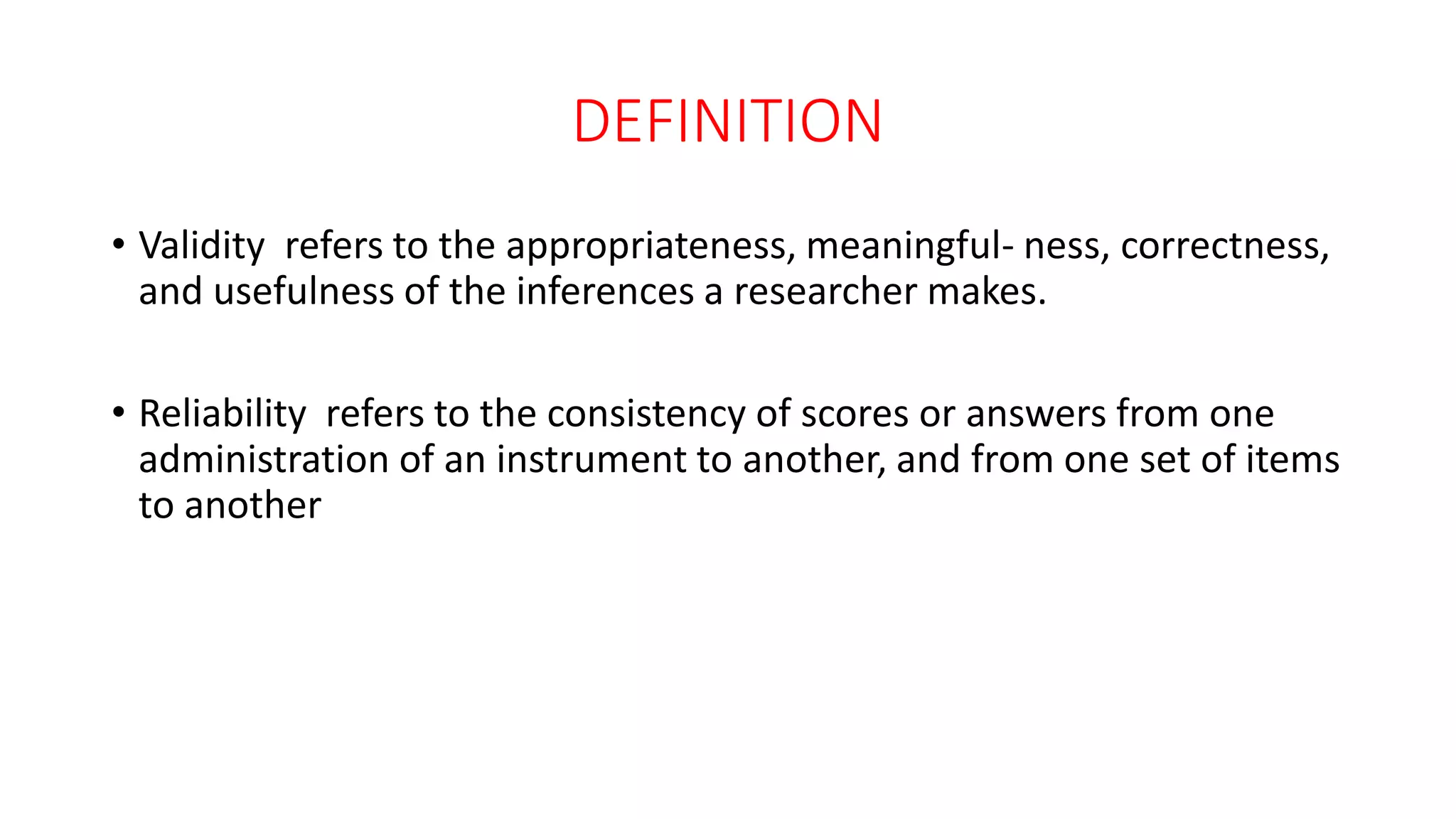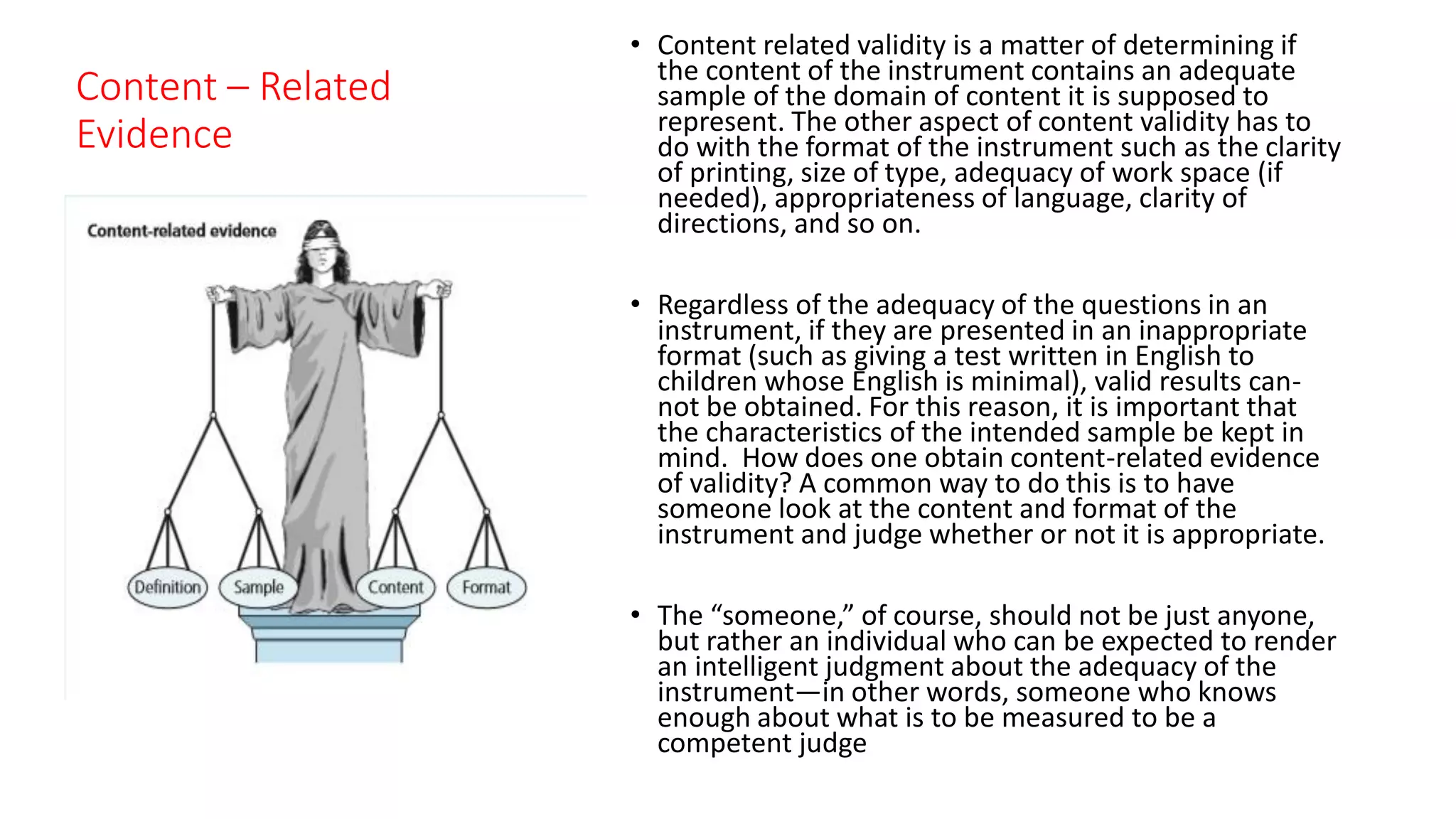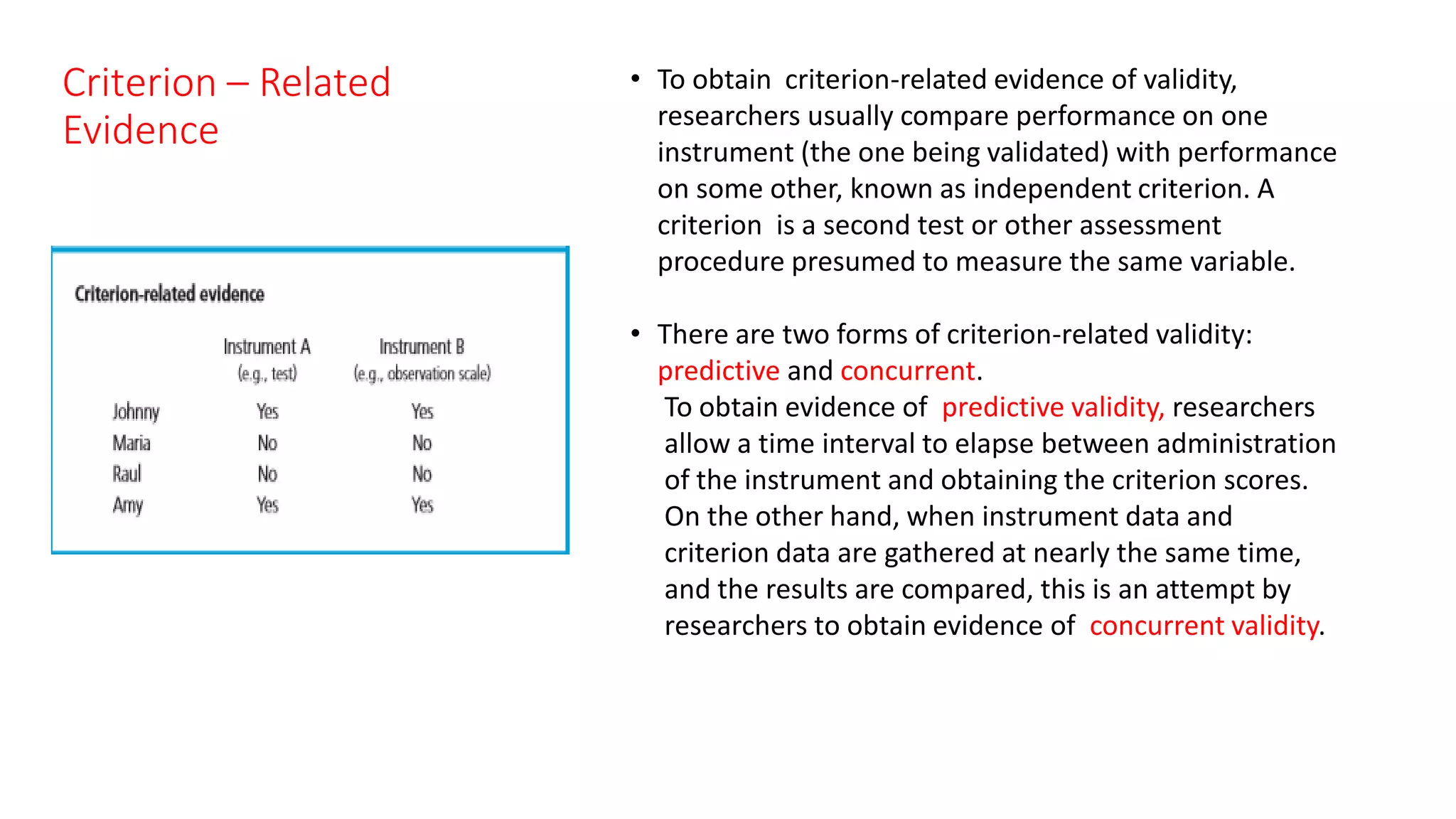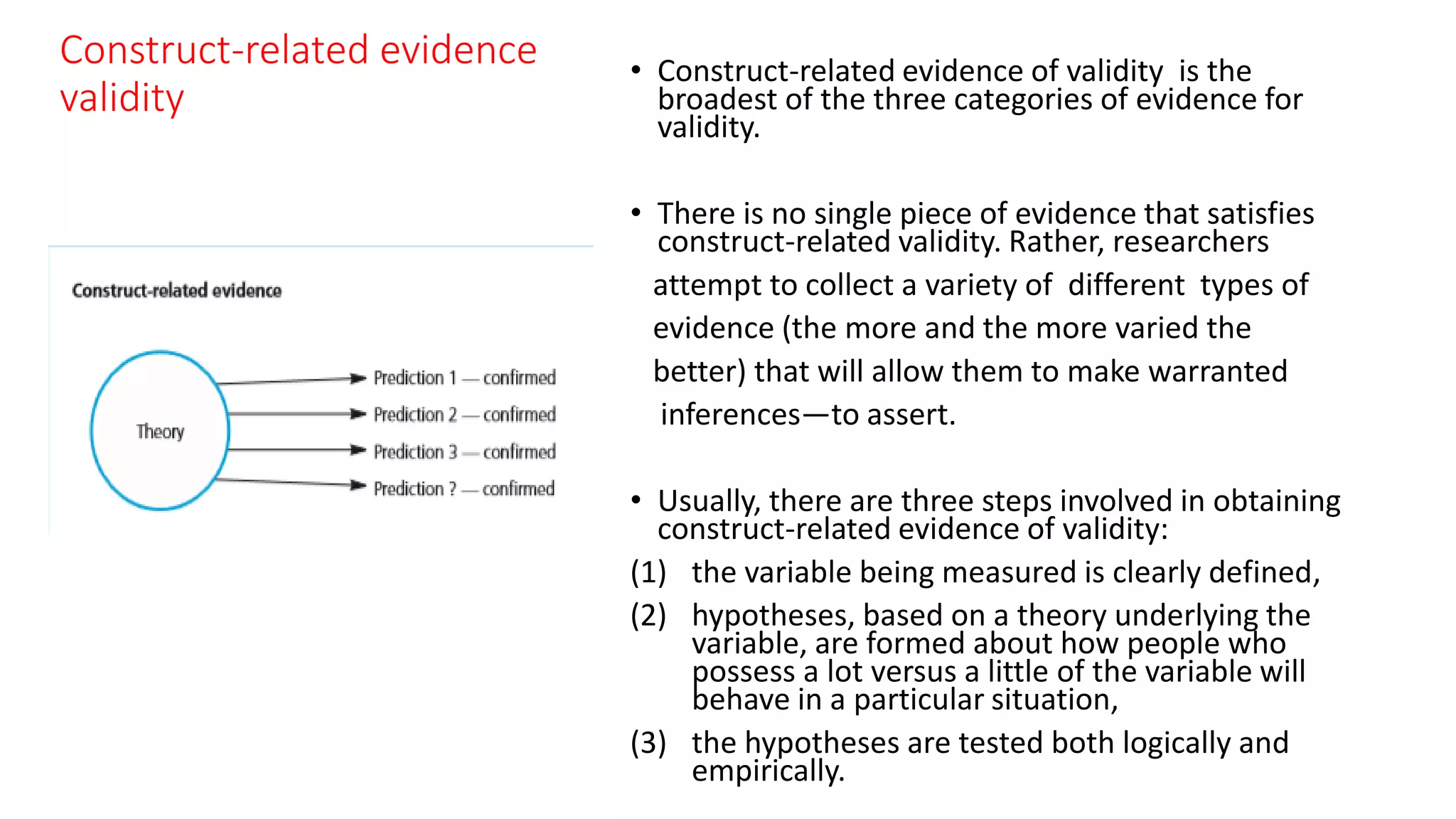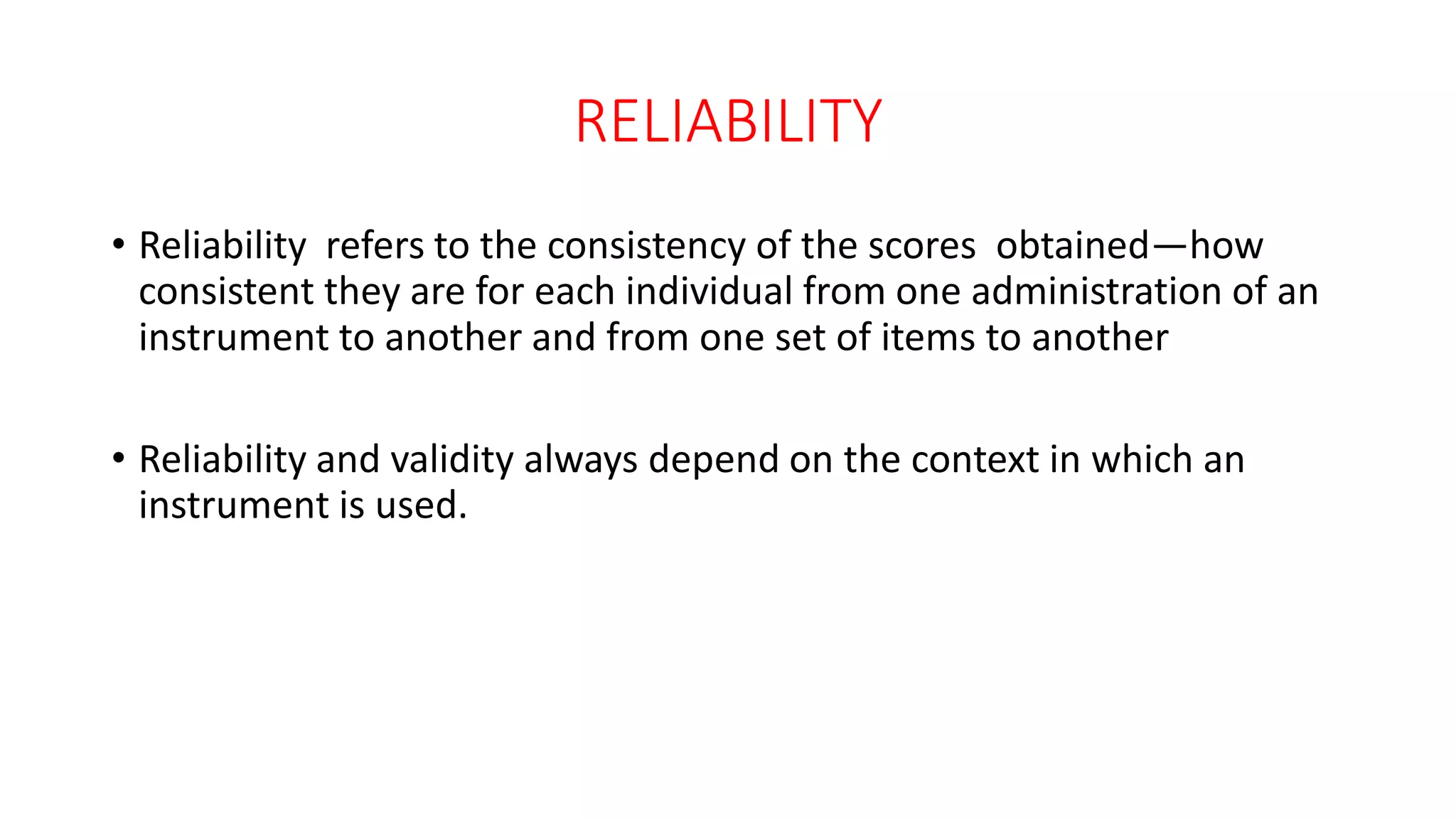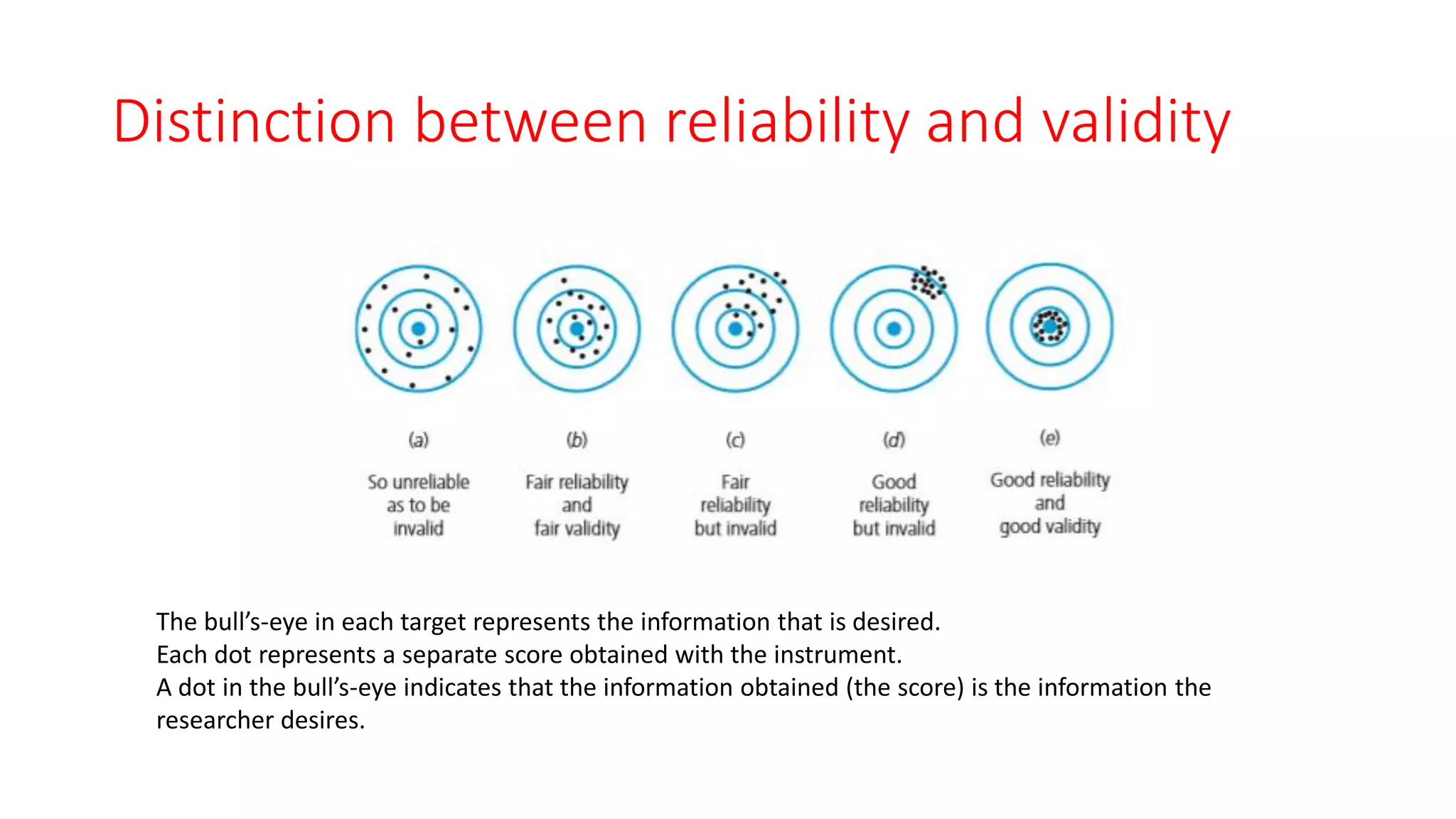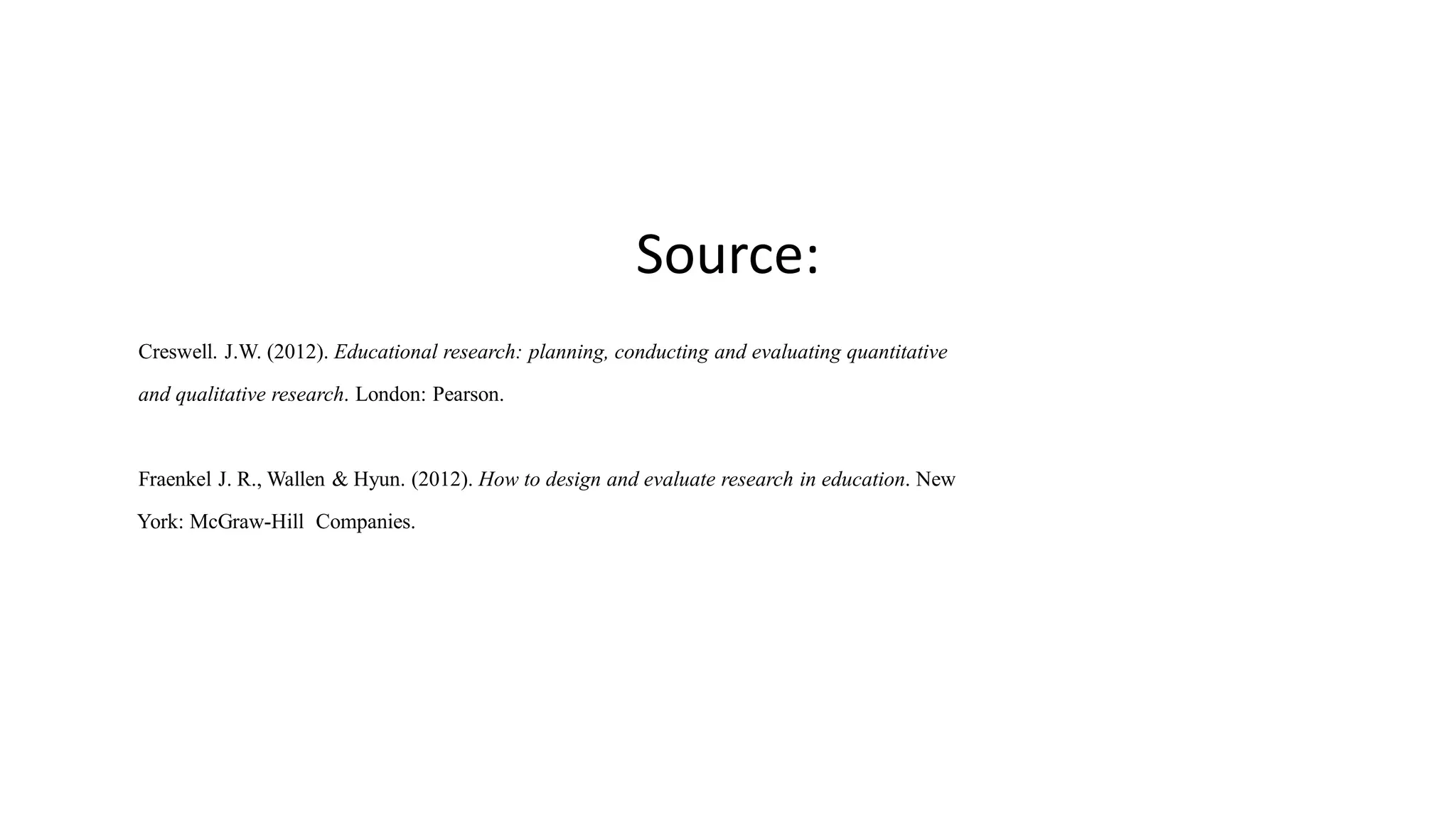The document discusses validity and reliability in research, defining validity as the appropriateness and accuracy of research conclusions, and reliability as the consistency of measurement outcomes. It outlines three types of validity: content-related, criterion-related, and construct-related, while also explaining methods to ensure reliability, such as test-retest and internal-consistency methods. The significance of these concepts is highlighted, particularly in how they apply to both quantitative and qualitative research.

